University of Sydney (USYD) researchers from the schools of physics, aerospace and chemical and biomolecular engineering, in collaboration with a metal matrix composites researcher from Shanghai Jiao Tong University, China, have suppressed ion migration in halide perovskites.
Publishing their findings in the USA-based Science Advances journal called Multiple B-site doping suppresses ion migration in halide perovskites, the paper shows changing certain atoms in halide perovskites, specifically at the B-site, can make them more stable by strengthening interactions between atoms, reducing how much the structure moves and minimising migration of ions.
They discovered that adding elements like alkaline-earth metals, such as calcium (Ca) or lanthanides (rare earth metals) such as europium (Eu) and Ytterbium (Yb) to the B-site was especially effective.
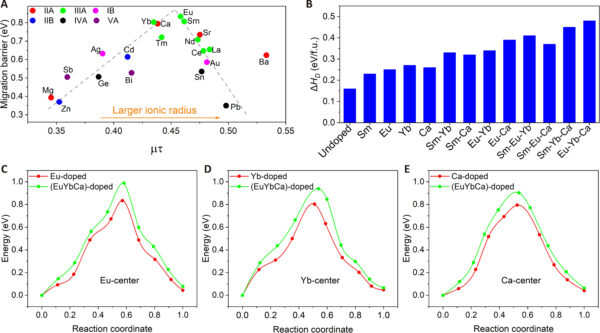
Image: University of Sydney
Lead halide perovskites are an optoelectronic material that show potential for solar cells and electronic devices due to their properties and low-cost fabrication, but their long-term stability is a problem because the ions inside can move around, known as ion migration, and negatively affects their performance.
The research papers says that despite achieving a photovoltaic power conversion efficiency exceeding 26%, halide perovskite commercialisation is largely hindered by inadequate long-term operational stability.
“One of the main drivers for this instability is ion migration, typically halide ions, which has been identified as a major cause of device performance degradation under operational conditions with electric field, light, and heat,” the paper says.
“These mobile ions in the perovskite active layer are believed to be responsible for widely observed anomalies, such as current-voltage hysteresis, slow conductivity response, and efficiency roll-off at high injection currents.”
Experiments have shown that ion migration–induced internal field screening is the dominant factor in the initial efficiency loss in perovskite solar cells making suppression of ion migration crucial to achieving long-term operational stability in perovskite solar cells and other optoelectronic devices.
Strain and compositional engineering strategies have been adopted to alleviate the migration of halide ions, in particular, the ternary-stoichiometry ABX3 perovskite structure offers a highly flexible platform for doping engineering at different atomic sites.
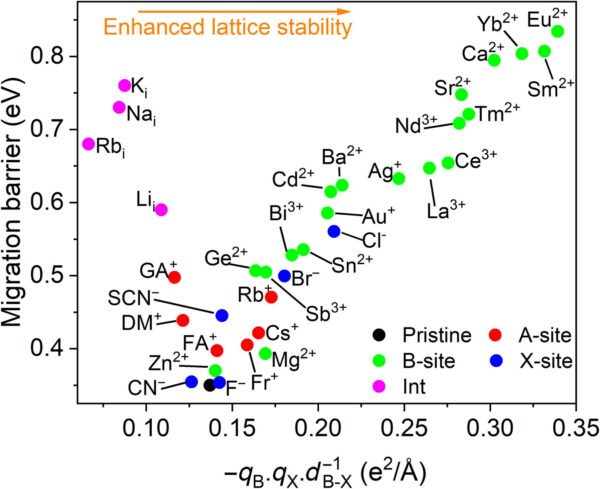
Image: University of Sydney
“While layer-perovskite engineering with large spacer cations effectively blocks ion migration, it disrupts the three-dimensional (3D) phases, leading to reduced charge carrier mobility and narrower absorption bands, thereby limiting the photovoltaic efficiency,” the researchers say.
“B-site doping or alloying has been less explored due to its relatively higher formation energy, with a primary focus only on carbon group elements such as germanium (Ge), tin (Sn), and lead (Pb).”
“Notably, the wider variety of potential dopants, such as rare earth ions, alkaline earth metal ions, and transition metal ions, establishes B-site cation engineering as a promising avenue for effectively suppressing ion migration and improving the long-term stability of perovskites optoelectronics,” the paper says.
Researchers from Sydney University are Yuhang Liang, Feng Li, Xiangyuan Cui, Catherine Stampfl, Simon Ringer, Jun Huang, Rongkun Zheng, and from China, Xudong Yang.
This content is protected by copyright and may not be reused. If you want to cooperate with us and would like to reuse some of our content, please contact: editors@pv-magazine.com.






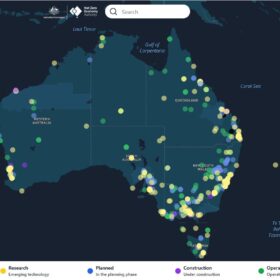
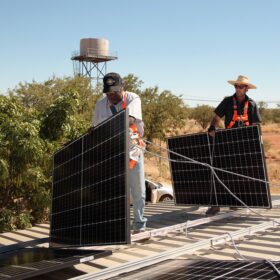
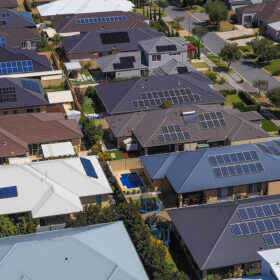
By submitting this form you agree to pv magazine using your data for the purposes of publishing your comment.
Your personal data will only be disclosed or otherwise transmitted to third parties for the purposes of spam filtering or if this is necessary for technical maintenance of the website. Any other transfer to third parties will not take place unless this is justified on the basis of applicable data protection regulations or if pv magazine is legally obliged to do so.
You may revoke this consent at any time with effect for the future, in which case your personal data will be deleted immediately. Otherwise, your data will be deleted if pv magazine has processed your request or the purpose of data storage is fulfilled.
Further information on data privacy can be found in our Data Protection Policy.